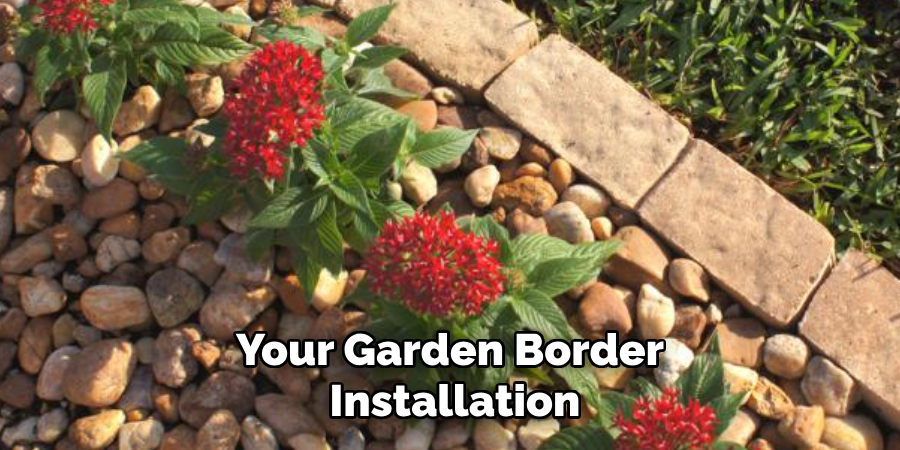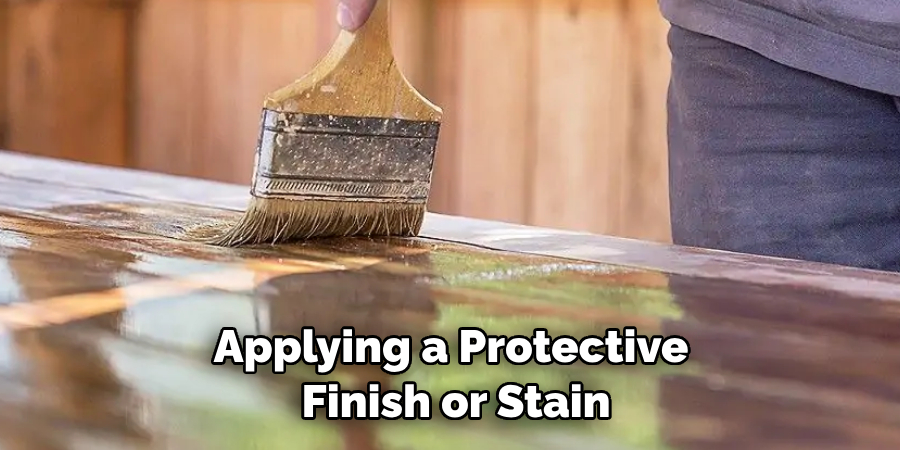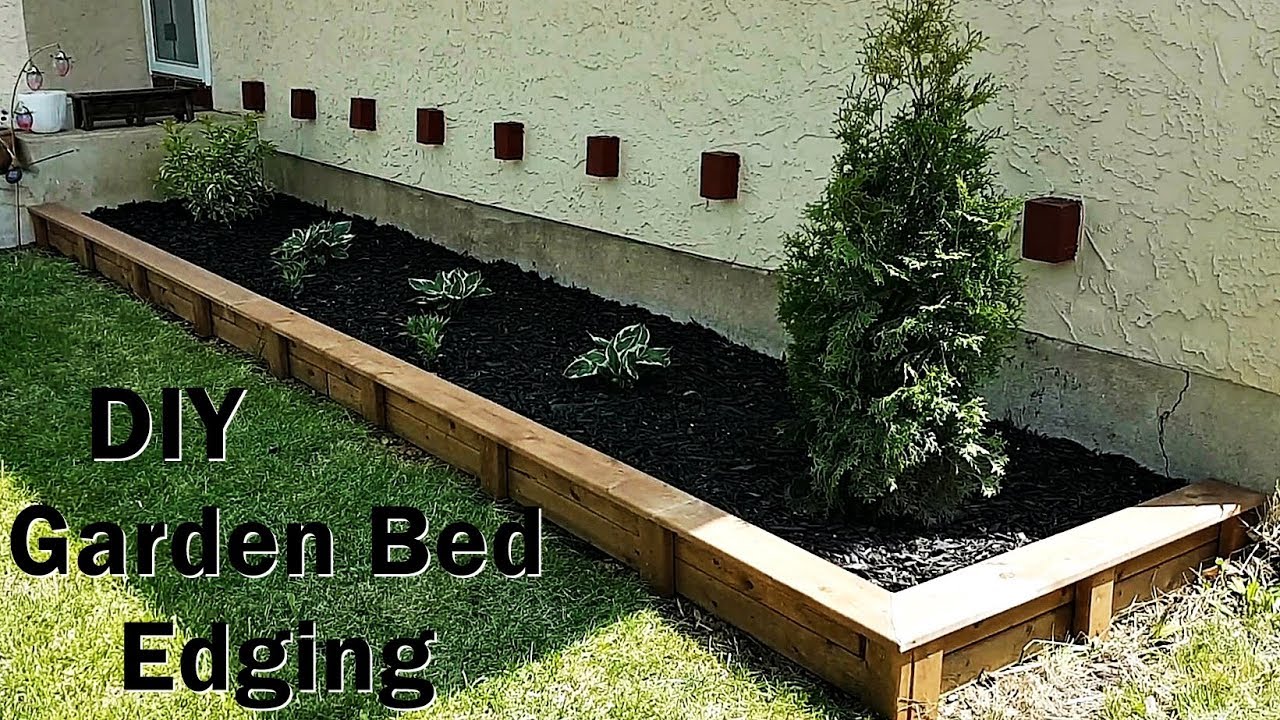To make a garden border with wood, start by measuring the desired length and width, then dig a trench to the appropriate depth. Place wooden stakes at regular intervals along the trench, and secure them with concrete.
Finally, attach wooden boards to the stakes to create the garden border. A wooden garden border can add a touch of elegance and definition to your outdoor space. Whether you want to separate different areas of your garden, create a barrier for plants, or simply add a decorative touch, a wooden border can do the trick.
In this article, we will walk you through the step-by-step process of making a garden border with wood. By following these simple instructions, you will be able to create a beautiful and functional garden border that will enhance the overall look and feel of your outdoor space. So let’s get started and give your garden a fresh new look!
:max_bytes(150000):strip_icc()/easily-install-a-landscape-timber-edging-2132416_Hero01-aa038b0b265a40ac9e4886137593263b.jpg)
Credit: www.thespruce.com
How to Make a Garden Border With Wood: Step by Step Guide
Choosing The Right Wood For Your Garden Border
To create an attractive and long-lasting garden border, it’s important to choose the right wood. Consider the durability and weather resistance of different wood types, such as cedar, redwood, and pressure-treated lumber. Cedar is known for its natural resistance to rot and insect damage, making it a popular choice.
Redwood is also resistant to decay and can enhance the aesthetics of your garden. Pressure-treated lumber is treated with chemicals that protect it against rotting and insects, ensuring its longevity. Each wood type has its pros and cons, so it’s essential to research and understand their characteristics before making a decision.
By selecting the appropriate wood for your garden border, you can enjoy a beautiful and durable addition to your outdoor space.
Preparing The Ground For Installation
To make a garden border with wood, start by preparing the ground. Measure and mark the desired location for the border, ensuring accuracy. Remove any existing vegetation or obstacles in the area. Evaluate the soil conditions to determine if any amendments are necessary.
This step is crucial for the success of your garden border installation. By addressing the soil quality, you can provide a healthy foundation for your plants. Consider factors like drainage and nutrient levels. Making the necessary amendments ensures optimal growing conditions for your garden.

Once you have prepared the ground, you can proceed with the installation of the wooden border. Follow these steps to create a beautiful and functional garden border with wood.
Installing The Wood Border
To install a wood border for your garden, start by determining the length and height of the border. Next, dig a trench that accommodates the wood. Place the wood pieces in the trench, ensuring a secure fit. To further secure the border, use stakes or rebar.
Alternatively, consider using interlocking panels or pre-made border kits for installation. These methods offer convenient options for achieving a professional-looking garden border with wood. Whether you prefer the traditional approach or want to explore alternatives, creating a garden border with wood adds a charming touch to your outdoor space.
So get started and enjoy the beauty and functionality that a wood border brings to your garden.
Enhancing The Appearance Of Your Garden Border
Enhancing the appearance of your garden border can be achieved by applying a protective finish or stain to the wood. This not only protects the wood from weathering but also adds a polished look to your garden. Another way to enhance your border is by adding decorative elements, such as trim or molding.

These details can bring a touch of elegance and sophistication to your garden design. Integrating plants or flowers along the border can also greatly beautify the space. This not only adds color and texture but also creates a seamless transition between the garden and the border.
Lastly, consider personalizing your garden border with practical and creative ideas that reflect your unique style. From incorporating personalized signs to using repurposed materials, there are endless possibilities to make your garden border truly one-of-a-kind. Get creative and have fun with it!
Maintaining And Repairing Your Wood Garden Border
Regularly inspect your wood garden border for any signs of damage or decay. Cleaning and sealing are essential routine maintenance tasks. Address common issues like rot or insect infestations promptly. For easy repairs and replacements, here are some valuable tips.
Frequently Asked Questions On How To Make A Garden Border With Wood
What Type Of Wood Is Best For Making A Garden Border?
Using rot-resistant woods like cedar or redwood is ideal for making garden borders as they are durable and can withstand outdoor elements for a long time.
How Deep Should The Garden Border Be?
The depth of the garden border should be around 6 to 8 inches to provide enough depth for plants to root and prevent grass or weeds from infiltrating the garden bed.
Can I Use Pressure-Treated Wood For A Garden Border?
While pressure-treated wood is resistant to decay, it contains chemicals that can leach into the soil. It’s best to avoid using pressure-treated wood for edging vegetable gardens or areas where you grow food.
What Tools Do I Need To Make A Garden Border With Wood?
Some essential tools you’ll need include a shovel, level, tape measure, stakes, mallet, circular saw, power drill, screws, and a string or hose to mark the border perimeter.
How Do I Maintain A Wooden Garden Border?
To maintain a wooden garden border, regularly inspect for rot or decay, replace any damaged or deteriorating wood, apply a waterproof sealant annually, and ensure good drainage to prevent water from pooling around the edging.
Conclusion
To summarize, creating a garden border with wood is a practical and attractive way to enhance your outdoor space. Not only does it provide a clear separation between different areas, but it also adds a touch of natural beauty to your garden.
By following the steps outlined in this guide, you can easily build a wooden garden border that is durable, cost-effective, and easy to maintain. Whether you’re a seasoned diy enthusiast or a novice gardener, this project is manageable and customizable to fit your specific needs and preferences.
Remember to choose the right type of wood, prepare the area properly, and secure the border firmly in place. Finally, don’t forget to add the finishing touches to create a cohesive and visually appealing garden design. Get creative and enjoy the process of transforming your outdoor space into a beautiful haven.

